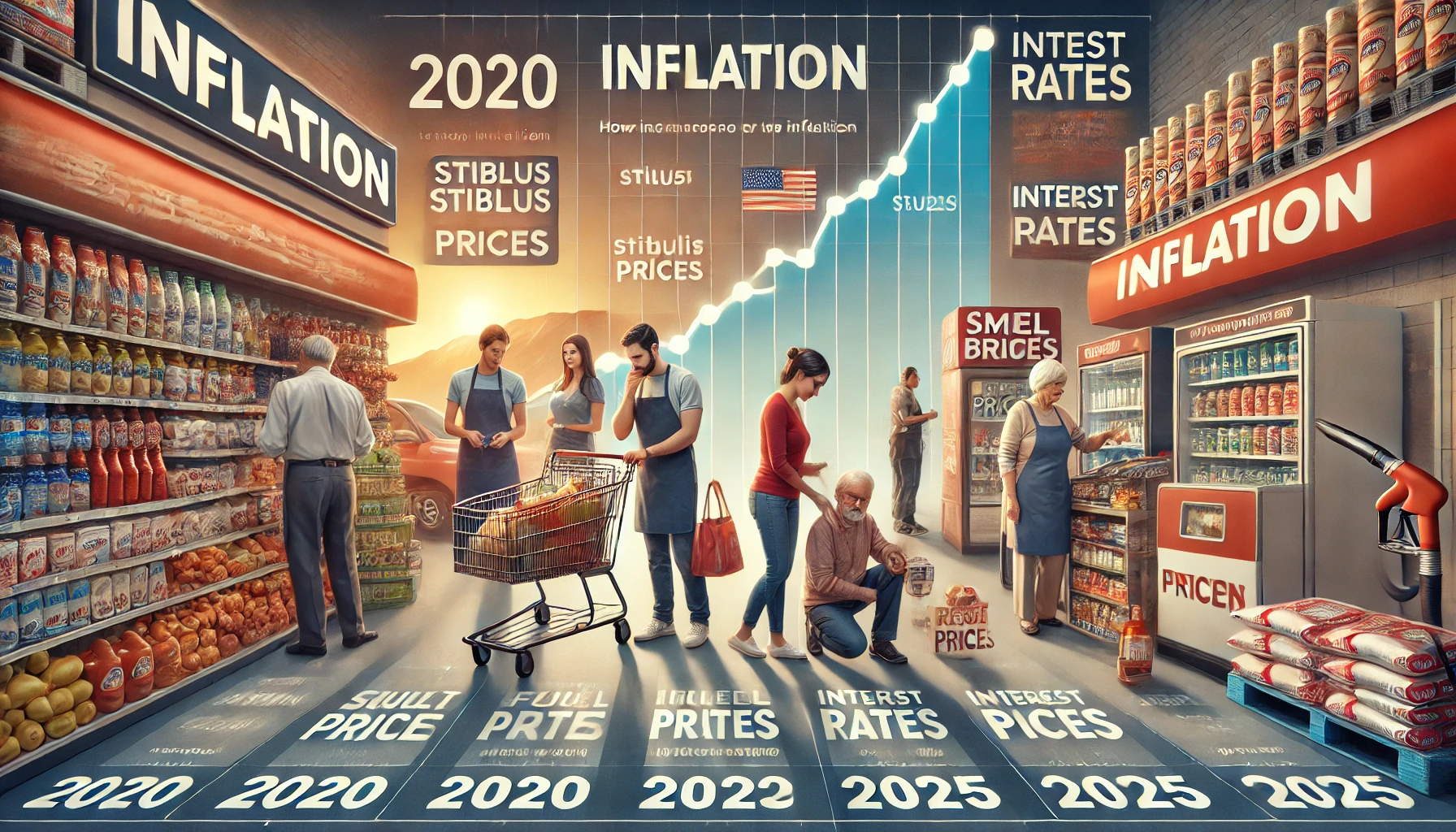The Rise and Retreat of US Inflation: A Data-Driven Account from 2020 to 2025
The IMF paper by Ball, Leigh, and Mishra explains the post-pandemic surge and decline in US inflation using a consistent framework based on labor market tightness, inflation expectations, and sectoral price shocks. Their model effectively accounts for both the rise to 9% inflation by mid-2022 and its retreat to near-target levels by early 2025.

In a collaborative effort spanning Johns Hopkins University, the International Monetary Fund, and Ashoka University, economists Laurence Ball, Daniel Leigh, and Prachi Mishra have released a timely update on the US inflation saga in IMF Working Paper WP/25/94. This study revisits their influential 2022 framework, which attributed the 2021–2022 inflation spike to three key forces: long-run inflation expectations, labor market tightness (captured through the vacancy-to-unemployment, or V/U, ratio), and sector-specific price surges, particularly in energy and autos. Now, with inflation back down near pre-pandemic levels, the authors return to ask whether those same factors can explain its retreat. Their answer is a clear yes: the drivers of the rise have not only reversed but continue to predict inflation behavior accurately through early 2025.
From Shock to Calm: The Inflation Rollercoaster
US inflation, largely dormant for decades, surged from a stable 2.1% average in 2017–2019 to a searing 9% peak in June 2022. This startling jump ignited widespread concern, triggering economic anxiety and debates about whether a new era of persistent inflation had begun. According to Ball, Leigh, and Mishra, this was no mystery. They argue the inflationary burst was rooted in an overheated labor market where job vacancies soared well beyond available workers; dramatic price increases in sectors like automobiles and energy, amplified by supply chain breakdowns and geopolitical disruptions; and a modest but real rise in long-term inflation expectations. However, this wasn’t a runaway fire. By March 2025, headline inflation had cooled to 2.4%, and the same three variables that explained its rise, V/U, sectoral shocks, and expectations, had all subsided.
Decoding the Core: What Really Drives Inflation?
A cornerstone of the study is the decomposition of headline inflation into core inflation and sector-specific "headline shocks." For core inflation, the authors use the weighted median from the Federal Reserve Bank of Cleveland, which filters out outlier movements and better reflects underlying macroeconomic conditions. From 2020 through 2022, both core inflation and headline shocks climbed in tandem. But by 2023, headline shocks had turned negative, and core inflation began to ease, falling from a peak of 7% to 3.5% by March 2025. The model proved remarkably accurate in both describing this trajectory and predicting it. Expectations, although important, played a relatively minor role. The real momentum came from changes in labor market tightness and the pass-through effects of headline shocks, particularly energy and auto price volatility, and temporary supply chain bottlenecks.
The V/U Ratio: A Silent Force Behind the Scenes
If there’s one unsung hero or culprit in this inflation narrative, it is the V/U ratio. This measure, which compares job vacancies to unemployed workers, soared to a staggering 2.0 in early 2022, the highest on record since the metric’s inception in 1951. While conventional wisdom, rooted in the Phillips curve, focuses on unemployment rates, the V/U ratio offers a sharper picture of labor market conditions. Interestingly, unemployment never rose above 4.2% throughout this period, meaning inflation fell not because of mass layoffs, but because employers began listing fewer job openings. By early 2025, the V/U had declined to 1.1, still above the historical norm of 0.6, but enough to cool inflationary pressures. The study’s model shows a non-linear relationship: high V/U values push inflation up steeply, while declines in the ratio have a strong disinflationary effect. This supports the idea that targeted labor market cooling, not broad-based job losses, was key to controlling inflation.
A Fragile Future: What Lies Ahead for Prices
While the study affirms that inflation has largely retreated, it stops short of declaring victory. Core inflation remains above the Federal Reserve’s 2% target, and the V/U ratio is still elevated. More importantly, the asymmetry observed in the inflation process raises concerns. The model reveals that while positive sectoral shocks (like energy spikes) push core inflation up, negative shocks (like falling gas prices) do not produce a comparable disinflationary effect. This implies that inflation, once it rises, is sticky on the way down. Further cooling of the labor market might be needed to close the gap, but this would require either more vacancy reductions or, if the Beveridge curve flattens or shifts outward again, a rise in unemployment.
The authors also flag external risks: tariff policies, new supply disruptions, or resurgent commodity prices could all produce renewed inflationary spikes. And while current inflation expectations remain anchored, the public’s confidence in central bank policy cannot be taken for granted indefinitely. Ultimately, this paper reinforces the value of the authors’ original framework. By showing that the same model can explain both the rise and fall of inflation with precision, Ball, Leigh, and Mishra provide not only a credible narrative for the past five years but also a valuable tool for understanding the inflationary landscape ahead.
- READ MORE ON:
- International Monetary Fund
- US inflation
- IMF
- labor market
- FIRST PUBLISHED IN:
- Devdiscourse










